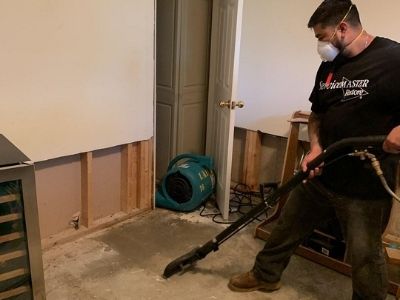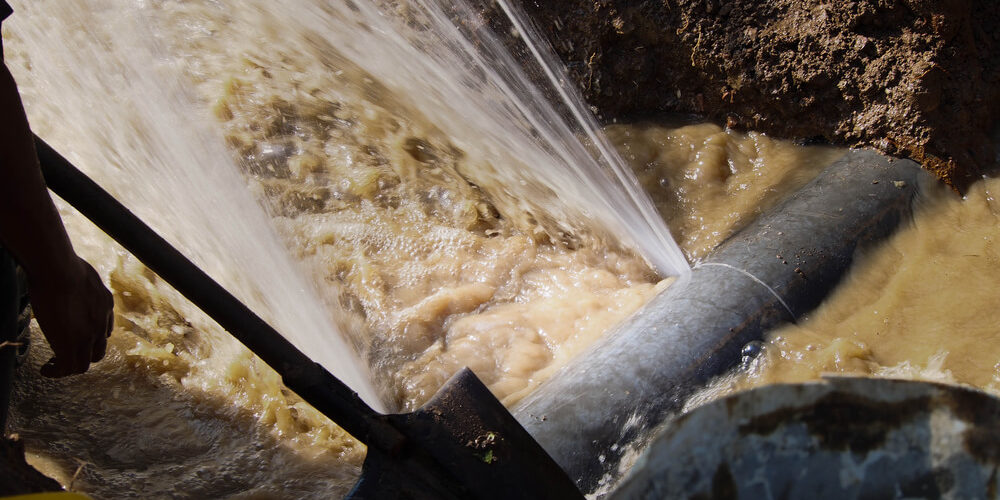Everything Homeowners Need to Know About Septic Tank Maintenance
Everything Homeowners Need to Know About Septic Tank Maintenance
Blog Article
Almost everyone seems to have their own unique piece of advice in relation to Do’s And Don’ts For Homeowners Managing With Water Damage.

What should you do if a pipes bursts in your home, producing a mini-waterfall as well as flooding an area of your house? In this situation, you should act quickly. The longer you wait, the extra extreme the water damages in your residential property. When an emergency such as this occurs, clearheadedness is crucial. For these reasons, you require to discover what to in case of a ruptured water pipe. Since time is of the essence, check out the following pointers listed below to assist you act quick.
Shut down the Key Waterline Valve
The first thing you have to do is shut the shut-off shutoff. Look for the neighborhood shut-off shutoff to turn-off water in one particular area just. If you don't know where the local shut-off valve to the fixture is, you need to turn-off the primary waterline valve. This will remove the water in your whole house. Normally, the main valve is found outside the residence next to the water meter. If it's not there, you can additionally discover it in the basement at an eye-level or maybe in the 1st flooring on the ground. Commonly, home builders but the shut-off shutoff in the main ground degree bathroom or appropriate next to it.
Call Water Damage Repair Pros for Help
After closing the water source, call the pros for assistance. With their professional aid, you can mitigate exacerbation since water can permeate through your things resulting in warped baseboards, loosened floor tiles, or damages framework.
Document the Damage For Insurance coverage
As you are waiting for the pros to show up, document the damage triggered by the wayward pipeline. Remaining positive with this enables you to file an insurance claim for protection, which will certainly assist you as well as your family get back on your feet.
Recover Points That Can Be Conserved
As soon as you're done taking images, read the items and take out one of the most vital ones from the pile. Dry them off and attempt to maintain as long as you can. Drag them away from moisture so they can begin to dry out.
Beginning the Drying Refine
Thankfully, water from your waterlines are tidy so you don't have to worry regarding sewer water. The moving water may have interrupted the dirt and particles in your carpets and also floorboards. Be prepared with handwear covers as you use pails to dispose out the water.
Specialists are the only ones certified to take care of the burs pipes as well as subsequent damage. And also keep in mind, pipelines don't simply suddenly burst. You will usually see red flags like bubbling paint, odd noises in the plumbing, moldy smell, caving ceiling, peeling wallpaper, or water discolorations. Take note of these points, so you can nip any problems in the bud.
What should you do if a water pipe bursts in your home, creating a mini-waterfall as well as swamping an area of your home? For these factors, you require to learn what to in situation of a ruptured water pipeline. After closing the water resource, call the pros for aid. With their specialist assistance, you can reduce worsening because water can leak with your points resulting in warped baseboards, loosened floor tiles, or damage structure. Luckily, water from your waterlines are tidy so you do not have to fret regarding drain water.
How to Handle a Burst Pipe and Minimize Damage
Steps to Take Ahead of Time
If you own property in an area that experiences cold weather, you need to be aware of seasonal maintenance tasks that will help you protect your property as the weather changes each year. One of the most important steps is to winterize your pipes to ensure they won't freeze or burst when the temperature drops. This includes action items like insulating any exposed pipes, detaching garden hoses and covering outdoor faucets. If the weather gets cold enough, you may even consider leaving a faucet dripping or opening cabinet doors during the coldest parts of the day.
No matter how prepared you might be, accidents and emergencies still happen. You'd be wise to set up a savings account specifically for your property so you have a "rainy day" fund set aside for unexpected expenses. All homes—regardless of age, location or condition—will inevitably need some form of emergency repair.
Steps to Take for Frozen Pipes
A frozen pipe will not necessarily burst, so if you can catch a frozen pipe early on, you could save yourself a major headache. When your area experiences frigid temperatures, be sure to check your plumbing and keep an eye out for warning signs like faucets only releasing small amounts of water or toilets not refilling when flushed. If you do run into one of these issues, you're likely dealing with a frozen pipe.
If this happens, your first step should be to cut off the water supply to that section of the plumbing. Expanding and freezing water can quickly cause damage. Even if the water supply is shut off, you will likely still deal with some leaking from the water that defrosts after the pipe has thawed. Be prepared with a mop, bucket and/or towels to quickly soak up any excess water.
In order to thaw a frozen pipe, you can use a space heater, infrared or incandescent heat lamp, or even a hairdryer to warm up the frozen area. Heat tape is also an option and should be used according to manufacturer instructions. Do not use any sort of open flame to thaw frozen pipes, as it poses a major fire hazard and can damage your pipes further.
Steps to Take for a Burst Pipe
Water damage claims are the second most common insurance claim in the U.S. When you're dealing with a frozen pipe, the water continues to expand as it freezes, which creates pressure that can cause a pipe to burst. When this happens, the crack or leak in the pipe allows water flow from the pipe to enter your home where it shouldn't. If a pipe does burst, you need to act quickly to mitigate property damage and repair cost.
Your very first step should be to shut off your main water supply to minimize flooding—typically the most expensive damage to address. Once you've shut off the water supply, make sure you identify the entire area that has been impacted by the leak. Remove as much water as possible—as quickly as possible—using a mop, sponges, towels or a shop vacuum or wet/dry vacuum. To prevent long-term damage due to moisture build-up, run a dehumidifier or fan in the affected area. Contact a licensed plumber to ensure the pipe is correctly repaired before running any water to that section of the home again. Burst pipes and the associated water damage are something you absolutely want to avoid as a property owner. If you've had to learn your lesson the hard way, don't let yourself get caught in a similar situation during the next spell of cold weather. The best way to deal with frozen or burst pipes is to prevent them in the first place—proactive winter maintenance will save you time, money and a whole lot of stress.

Do you really like more info about What You Should And Shouldn’t Do When Dealing With Water Damage? Create feedback directly below. We would be pleased to find out your views about this post. We hope that you come back again in the future. I beg you set aside a second to promote this entry if you appreciated it. Many thanks for taking the time to read it.
Report this page